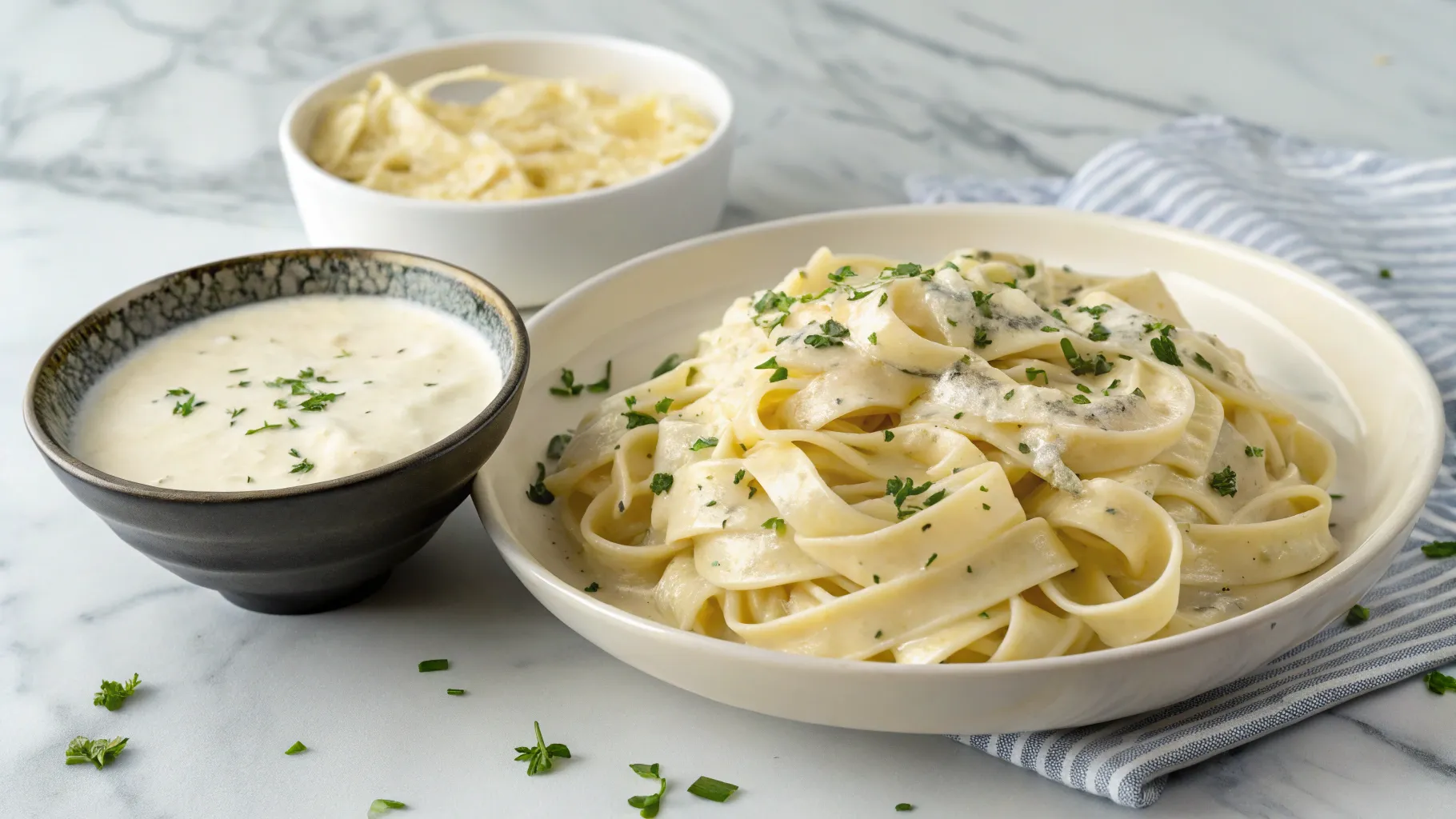Few sauces have earned a place in the hearts of home cooks like Alfredo sauce. With its velvety texture, mild richness, and endless versatility, it’s become a staple in kitchens around the worl, far beyond its Roman origins.
Although the traditional Italian version was once a simple combination of butter and cheese, today’s Alfredo sauces range from light and dairy-free to ultra-indulgent. And best of all, it’s incredibly easy to make at home, no complicated ingredients, and no unnecessary additives.
For a full dinner idea, try it with our classic chicken Alfredo or blend it into creamy mushroom asparagus chicken penne for a flavorful twist. Vegetarian? It’s also amazing in our spinach mushroom lasagna.
So let’s dive into the origins, secrets, and step-by-step methods for making the ultimate homemade Alfredo sauce, with options for every palate.
A Brief History of Alfredo Sauce
Although now synonymous with creamy pasta in American restaurants, Alfredo sauce actually began in early 20th century Italy with just two ingredients: butter and freshly grated Parmigiano-Reggiano.
Chef Alfredo di Lelio first created the dish for his wife after childbirth, intending to offer a simple, comforting meal. Tourists fell in love with it, and the dish quickly spread, especially after Hollywood actors dined at his restaurant and brought the recipe back to the U.S.
Over time, American adaptations introduced heavy cream, garlic, and sometimes other cheeses to create the luxuriously rich version we now know as Alfredo sauce.
📝 Today’s sauce can be as minimal or as indulgent as you like, but the goal is always the same: silky texture, rich flavor, and comfort in every bite.

What Makes a Great Alfredo Sauce?
Not all Alfredo sauces are created equal. A truly great one is:
- Smooth and silky, never grainy or clumpy
- Lightly cheesy without being overwhelming
- Seasoned just enough to complement pasta, not overpower it
- Easy to prepare and quick to pull together
To achieve this, balance is key. Using the right cheese and fat ratio, and controlling your heat while mixing, will make or break the sauce.
Step-by-Step: How to Make Classic Alfredo Sauce
Here’s a foolproof method to make your own Alfredo sauce in just 15–20 minutes. No fancy tools or skills required!
Ingredients (Serves 4):
- 4 tbsp unsalted butter
- 1 cup heavy cream
- 1 cup freshly grated Parmesan
- 1–2 cloves garlic (optional), minced
- Salt and pepper to taste
- Pinch of nutmeg (optional)
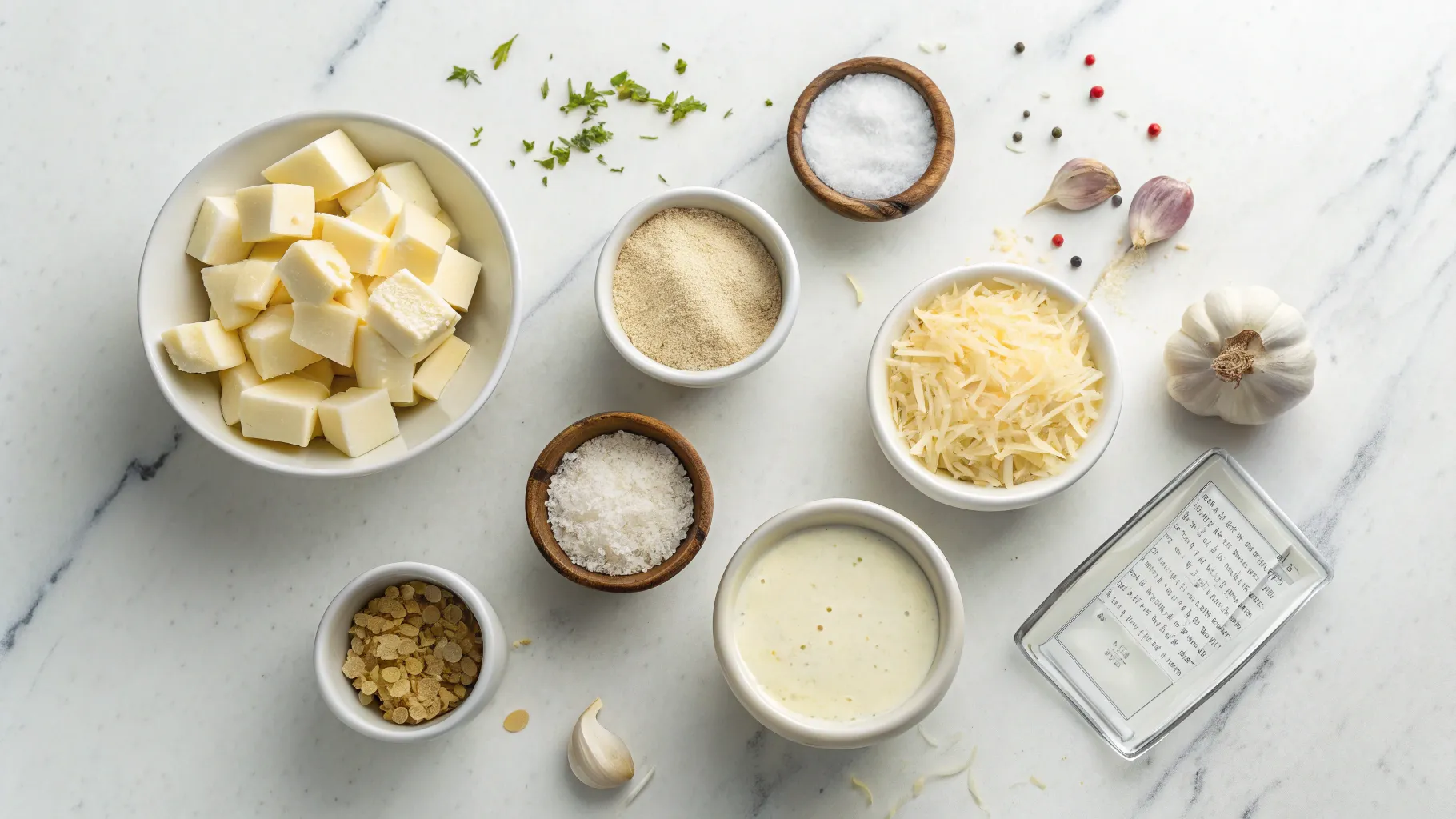
Instructions:
-
Melt butter in a medium saucepan over medium heat. If using garlic, sauté for 30–60 seconds until fragrant, don’t let it brown.
-
Pour in the cream and stir continuously. Let it simmer (not boil) for 4–5 minutes until slightly thickened.
-
Reduce heat to low, then slowly add grated Parmesan, stirring until fully melted and smooth.
-
Season with salt, pepper, and nutmeg if using. Continue to stir gently until the sauce thickens to your desired consistency.
-
Remove from heat and serve immediately over warm pasta.
💡 Pro tip: If the sauce thickens too much, stir in a splash of warm milk to loosen it.

Alfredo Sauce Variations – From Light to Decadent
While the classic version of Alfredo sauce is already delicious, it also serves as the perfect canvas for creativity. Whether you’re adjusting for dietary needs or just looking to change things up, here are some tried-and-true variations:
1. Lighter Alfredo Sauce
- Swap heavy cream for whole milk or half-and-half
- Add a tablespoon of flour or cornstarch to help thicken
- Use less butter for a more balanced flavor
2. Dairy-Free or Plant-Based Alfredo
- Use oat cream, coconut cream, or cashew cream
- Replace butter with plant-based margarine or olive oil
- Use nutritional yeast or dairy-free Parmesan for a cheesy finish
3. Garlic Alfredo Sauce
- Sauté minced garlic in butter before adding cream
- For roasted depth, use oven-roasted garlic purée
4. Extra-Cheesy Alfredo
- Add cream cheese, mozzarella, or asiago for a stretchier sauce
- Stir in a mix of cheeses for more complexity
- Avoid processed cheese blends for best results
5. Add-in Friendly
- Stir in sautéed mushrooms, steamed broccoli, spinach, or grilled chicken
- A pinch of paprika or red pepper flakes adds mild heat
- Fresh parsley or chives brighten up the richness
💡 Pro tip: No matter which route you choose, remember to keep the sauce balanced, not too thick, not too salty, and always smooth.
Pasta Pairings & Beyond: What to Serve with Alfredo Sauce
Although Alfredo sauce is famously paired with fettuccine, its creamy richness and mild flavor make it a perfect match for a wide variety of dishes. Whether you’re preparing a simple weeknight meal or a show-stopping dinner, pairing your Alfredo sauce with the right pasta, proteins, vegetables, or sides elevates the experience.
Let’s explore the best ways to serve this velvety sauce and create a balanced, satisfying meal.
1. Best Pasta Shapes for Alfredo Sauce
Because Alfredo sauce is thick and creamy, it works best with pastas that can hold onto that luscious texture. From long strands to sturdy tubes, the goal is to ensure each bite delivers both pasta and sauce.
-
Fettuccine – The gold standard; wide and flat noodles that perfectly cling to creamy sauces.
-
Linguine or Tagliatelle – Similar to fettuccine but slightly narrower. Their smooth surface complements the sauce beautifully.
-
Penne or Rigatoni – Great for baked pasta dishes, their hollow shape traps pockets of sauce inside each bite.
-
Tortellini or Gnocchi – These rich, filled or doughy pastas pair wonderfully with Alfredo’s creamy base, adding both texture and heartiness.
💡 Pro tip: Avoid delicate, thin pastas like angel hair, as they tend to get overwhelmed by heavier sauces like Alfredo.
2. Great Protein & Veggie Additions
Adding a protein or seasonal vegetables to your Alfredo dish not only boosts its nutritional value, but also brings in color, flavor, and a touch of variety.
Protein Boosts:
- Grilled or baked chicken breast – A classic combo, offering lean protein and a smoky edge.
- Seared shrimp – For a coastal twist, shrimp adds sweetness and elegance to the dish.
- Pan-fried tofu – A lighter, plant-based option with a crispy exterior and mild flavor.
Vegetable Enhancements:
- Roasted zucchini, green peas, or asparagus – Bring brightness and freshness to balance the richness.
- Sautéed mushrooms – Earthy and umami-rich, mushrooms work beautifully with cream sauces.
- Caramelized onions – Add a touch of sweetness that plays off the sharpness of the Parmesan.
📝 Vegetables add more than color, they cut through the creaminess and make the meal feel lighter and more complete.
3. Perfect Side Dishes
No Alfredo meal is truly complete without a few comforting sides. Whether you want crunch, contrast, or something to mop up extra sauce, these dishes have you covered:
- Garlic bread or flatbread – Ideal for scooping up leftover sauce and adding a little crunch to your bite.
- Crisp green salad with lemon vinaigrette – A bright, acidic salad refreshes the palate and lightens the meal.
- Roasted baby potatoes – Crisp on the outside, tender on the inside—a great side when skipping pasta.
- Steamed green beans or broccolini – Mildly bitter greens add balance and freshness.
💡 Pro tip: Pairing Alfredo with something crisp, tangy, or herbal helps “cut” the creaminess and keeps your palate refreshed throughout the meal.
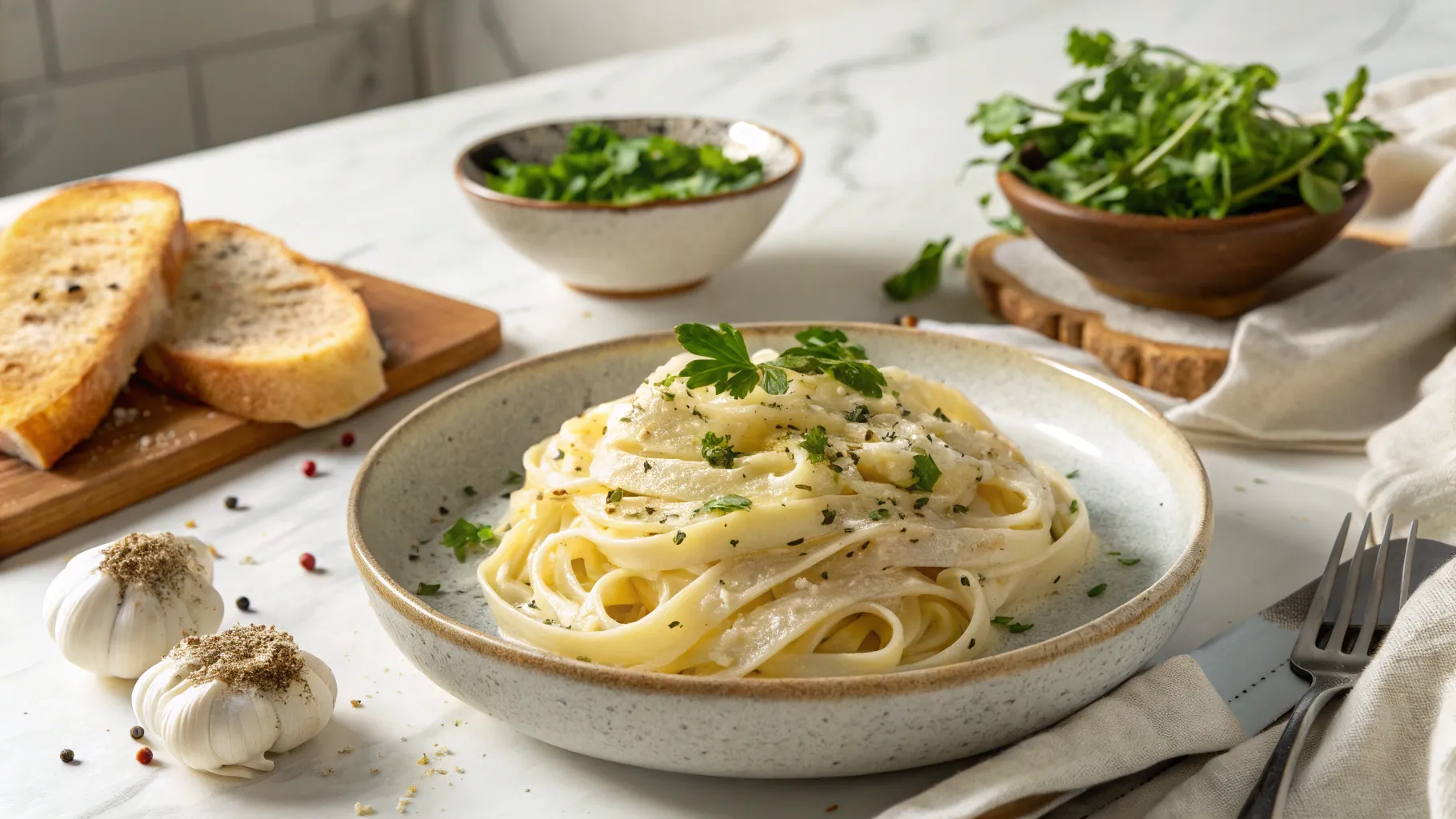
Beyond Pasta – Creative Uses for Alfredo Sauce
While Alfredo sauce is most often poured over a pile of fettuccine, its creamy texture and mild, savory flavor make it one of the most adaptable sauces in the kitchen. Its richness is perfectly suited for a variety of comfort food recipes, and some of them might just become new family favorites.
Here are some unexpected yet delicious ways to use Alfredo sauce beyond the pasta bowl:
Try it as:
- A pizza base – Replace red sauce with Alfredo for a white pizza topped with spinach, mushrooms, or grilled chicken.
- A creamy layer in white lasagna – Use Alfredo instead of béchamel for a smoother, richer flavor.
- Sauce for stuffed shells or baked ziti – Combine Alfredo with mozzarella and bake for gooey, cheesy perfection.
- Dip for breadsticks or roasted veggies – Warm it up and serve as a crowd-pleasing dipping sauce.
- A topping for baked potatoes – Drizzle over crispy-skinned potatoes with chopped herbs or sautéed mushrooms.
- Poured over grilled chicken or tofu – Turns a simple protein into something silky, savory, and dinner-worthy.
💡 Pro tip: Think of Alfredo sauce as your all-purpose white sauce, creamy enough to comfort, and neutral enough to match bold or delicate ingredients alike.
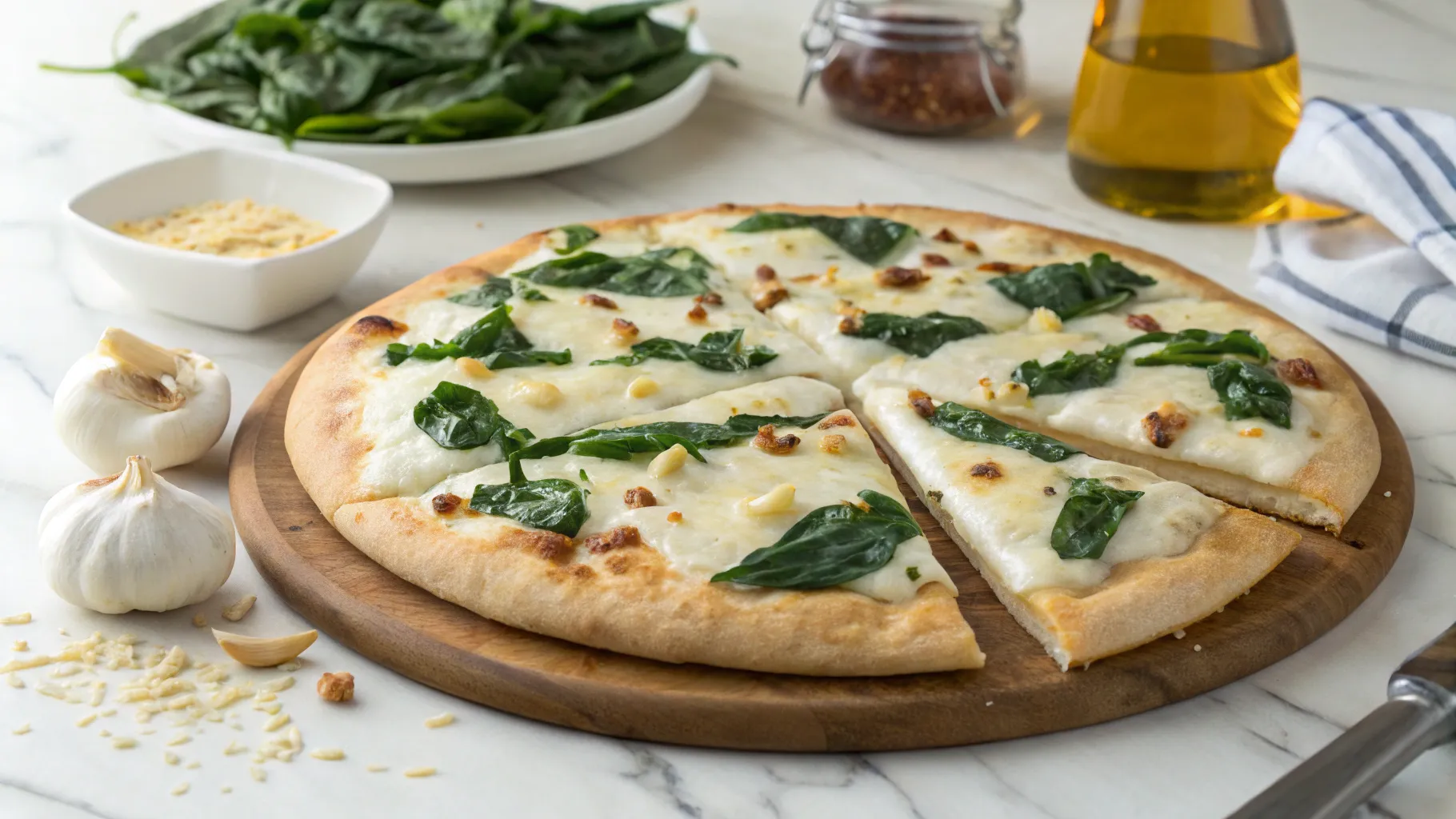
Storage, Freezing & Reheating Tips
If you’ve made a large batch of Alfredo sauce or have some leftovers, the good news is that it stores fairly well, with a few key precautions. Because it’s dairy-based, it’s best to follow proper handling methods to maintain its texture and flavor.
1. Storage: Keep It Fresh
- Transfer your sauce to an airtight glass or BPA-free plastic container
- Refrigerate immediately after cooling
- Best used within 3 to 4 days
- Give it a good stir before reheating, as some separation is natural
💡 Pro tip: Storing in a shallow container helps it cool quickly and evenly, reducing the risk of bacterial growth.
2. Reheating: Gentle Is Best
Cream-based sauces are sensitive to heat. To maintain a smooth texture:
- Reheat slowly over low heat in a saucepan
- Add a splash of milk or cream to restore consistency
- Stir frequently with a silicone spatula or whisk
- Avoid boiling, as this can cause the sauce to split or become grainy
💡 Pro tip: If reheating a full pasta dish, add a bit of extra liquid and cover the pan to create steam while warming.
3. Freezing: Yes, You Can (With Caution)
Freezing Alfredo sauce is possible, but texture may change slightly after thawing. For best results:
- Freeze in small portions using freezer-safe containers or silicone molds
- Label and date; use within 2 months
- Thaw overnight in the refrigerator, never on the counter
- Reheat using the gentle method above
💡 Pro tip: If your sauce separates after thawing, whisk in a splash of cream and warm gently. A smooth texture usually returns with time and patience.
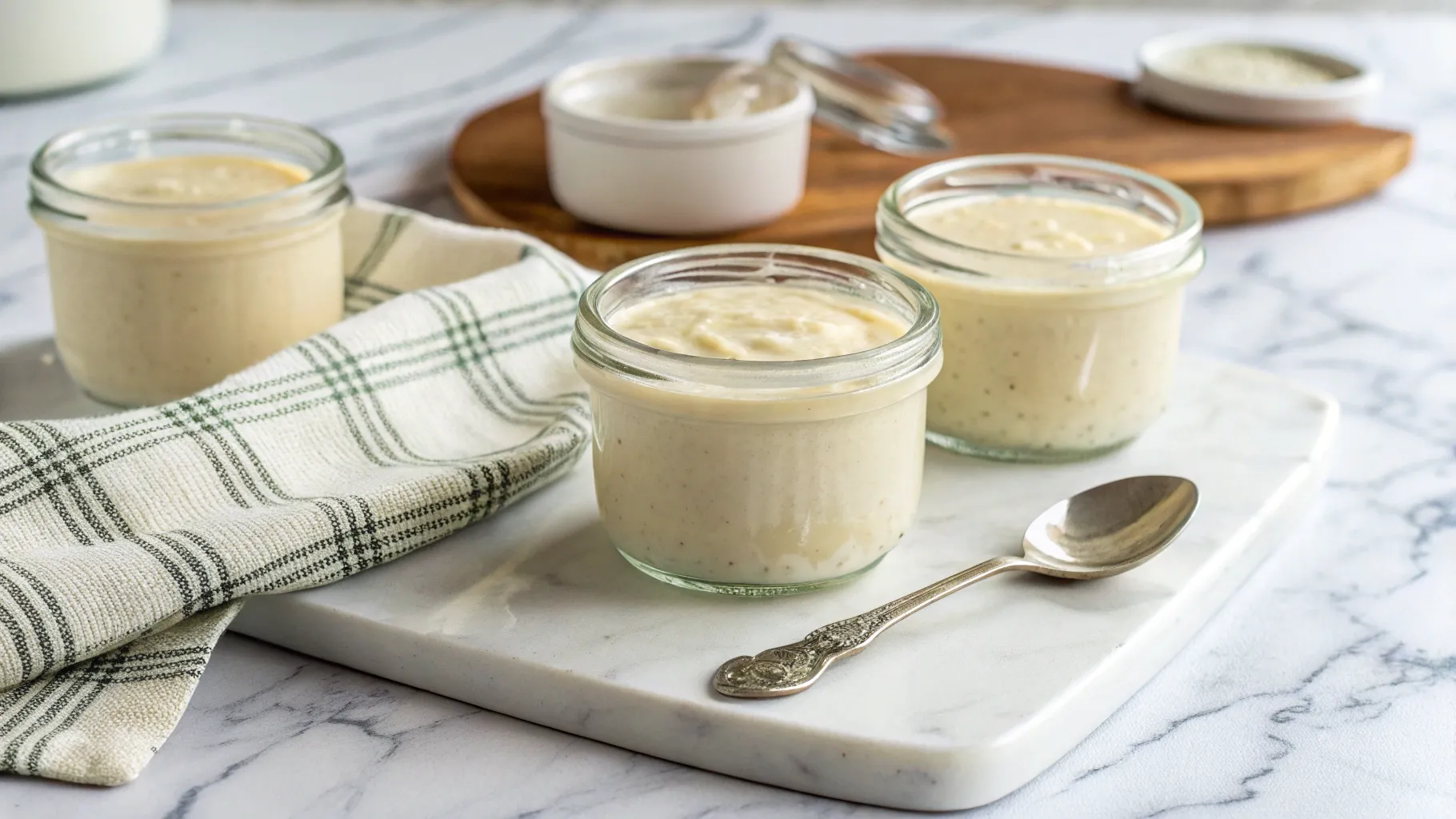
Frequently Asked Questions (FAQs)
Q1: Can I make Alfredo sauce without cream?
Yes! Use whole milk or a combination of milk and flour to thicken. The texture will be lighter, but still creamy.
Q2: What cheese can I use instead of Parmesan?
You can substitute with grana padano, pecorino romano, or a blend of mozzarella and asiago. Always grate it fresh for best melting.
Q3: Is Alfredo sauce gluten-free?
Yes, if you don’t add flour as a thickener and your cheese is gluten-free. Always check labels for hidden gluten in processed ingredients.
Q4: Why is my Alfredo sauce grainy or clumpy?
This usually happens when cheese is added too quickly or over high heat. Add cheese off the heat, a little at a time, while stirring constantly.
Q5: Can I make Alfredo sauce ahead of time?
Absolutely. Store in the fridge and reheat gently, adding a splash of cream or milk to refresh the texture.
Q6: Can I use pre-shredded cheese?
It’s not ideal. Pre-shredded cheeses contain anti-caking agents that prevent smooth melting, often leading to a gritty sauce.
Final Thoughts
Whether you’re craving a cozy weeknight dinner or prepping a dish to impress your guests, Alfredo sauce brings comfort, flexibility, and flavor to the table. With just a few simple ingredients, you can create a restaurant-quality sauce at home, and make it your own.
From its Italian roots to your kitchen table, this creamy classic continues to evolve without ever losing its soul-satisfying charm. Try it once, and it just might become your signature sauce.
💡 Enjoyed this recipe?
Follow us for daily kitchen tips and tasty inspiration!
📌 Pinterest | 📘 Facebook | 📸 Instagram

Homemade Alfredo Sauce – Flavor in Every Spoonful
This rich and creamy homemade Alfredo sauce is made from real ingredients like butter, cream, and Parmesan. It’s velvety smooth, quick to prepare, and perfect for pasta, pizza, or dipping.
- Total Time: 15 minutes
- Yield: Serves 4
Ingredients
- 4 tbsp unsalted butter
- 1 cup heavy cream
- 1 cup freshly grated Parmesan cheese
- 1–2 cloves garlic (optional), minced
- Salt and black pepper to taste
- Pinch of nutmeg (optional)
Instructions
- Melt butter in a saucepan over medium heat.
- Sauté garlic for 30–60 seconds if using.
- Pour in cream and stir gently for 4–5 minutes until slightly thickened.
- Reduce heat to low and gradually stir in Parmesan until fully melted.
- Season with salt, pepper, and nutmeg (if using).
- Remove from heat and serve immediately over pasta or as desired.
- Prep Time: 5 minutes
- Cook Time: 10 minutes
- Category: Sauce
- Method: Stovetop, One-Pot
- Cuisine: Italian-American
Keywords: Homemade Alfredo Sauce, creamy Alfredo sauce, Parmesan pasta sauce, white pasta sauce, easy Alfredo recipe, Alfredo from scratch

